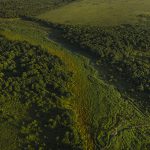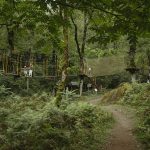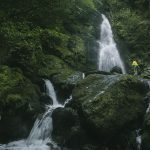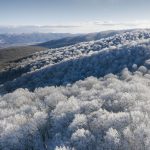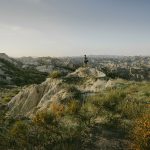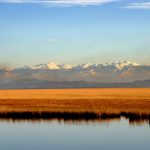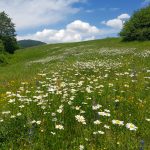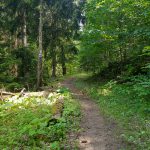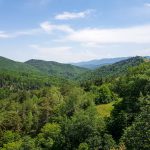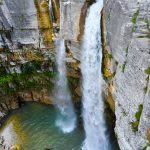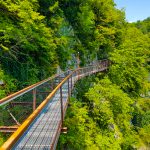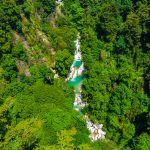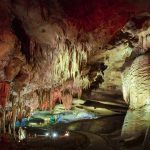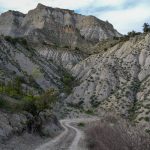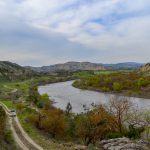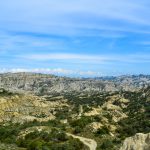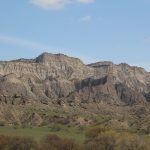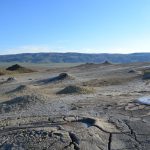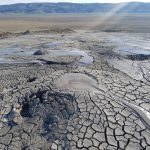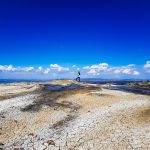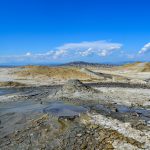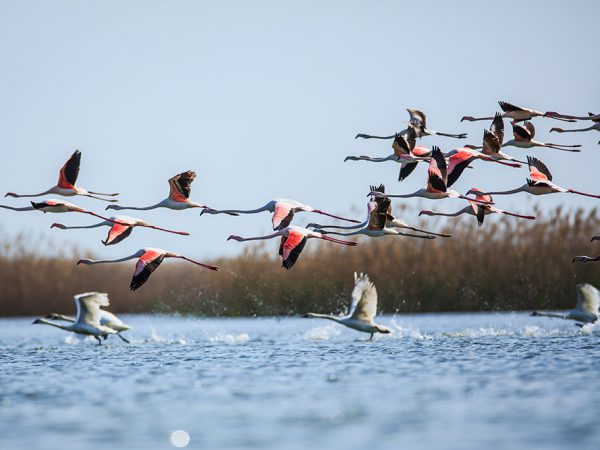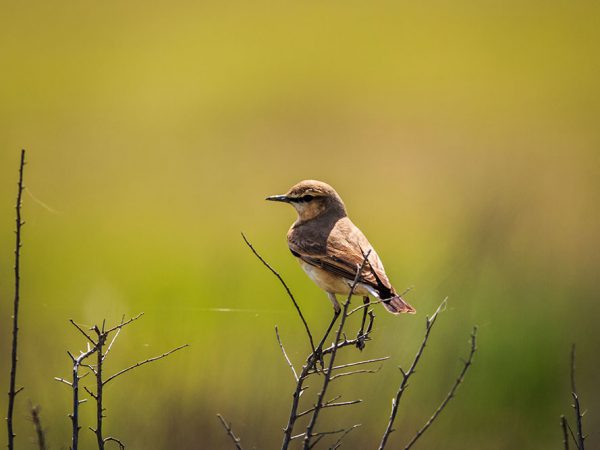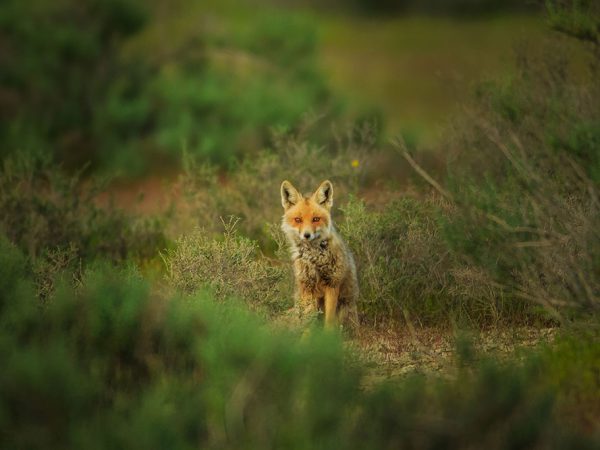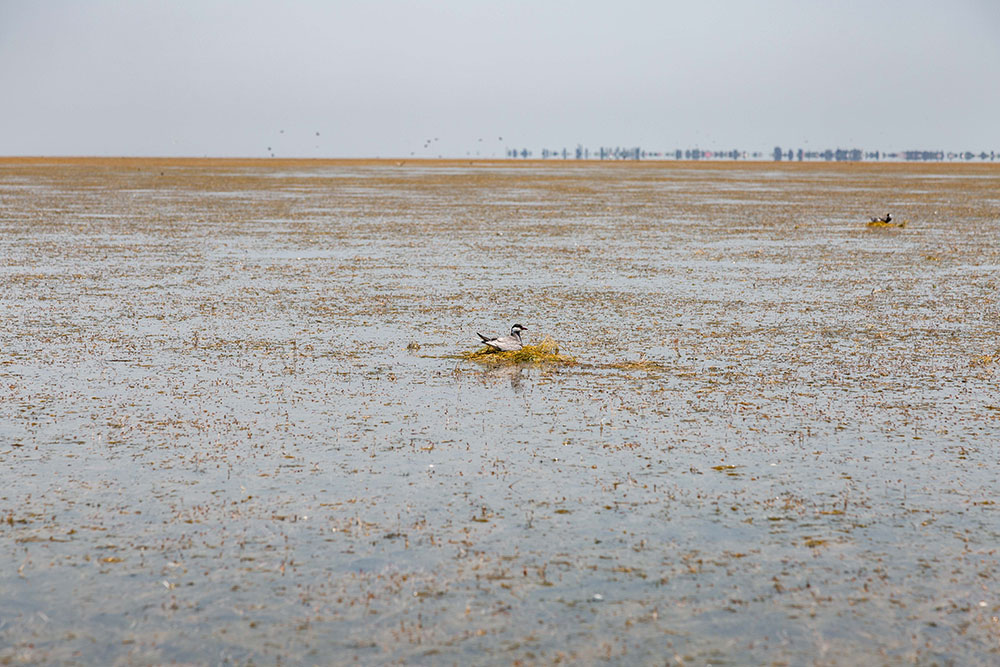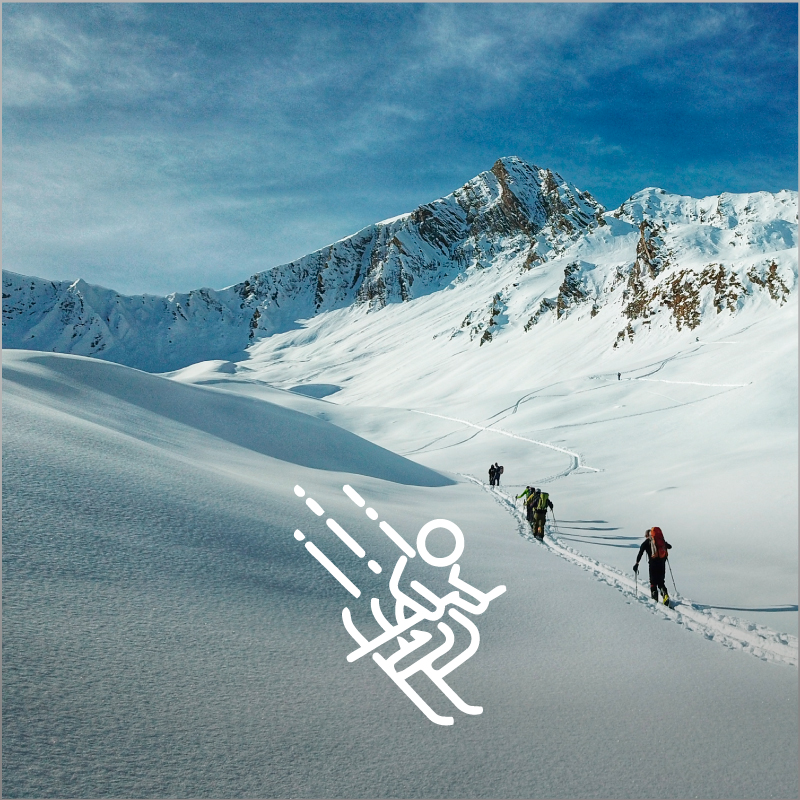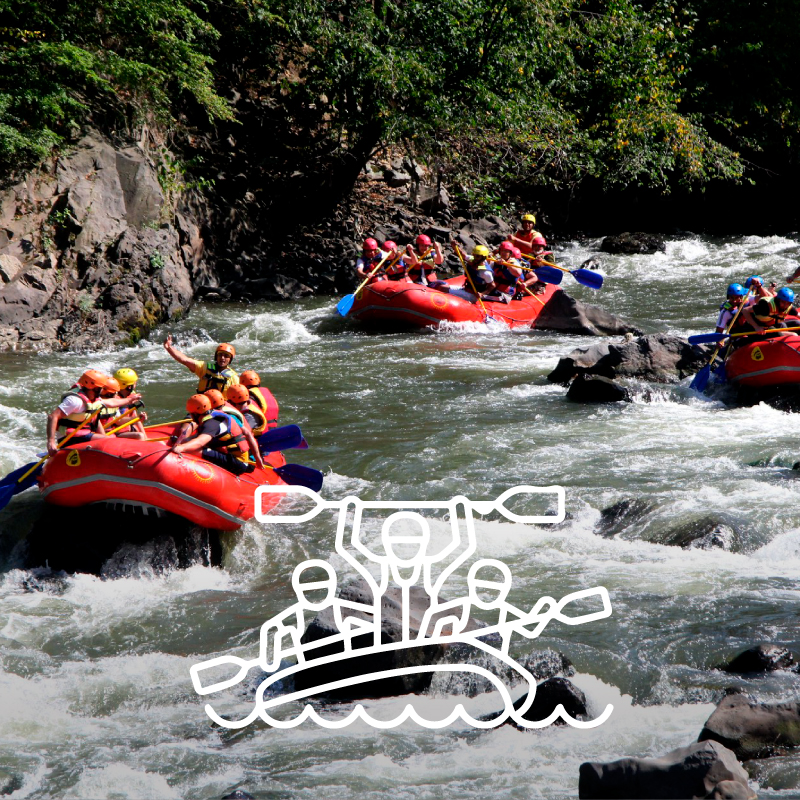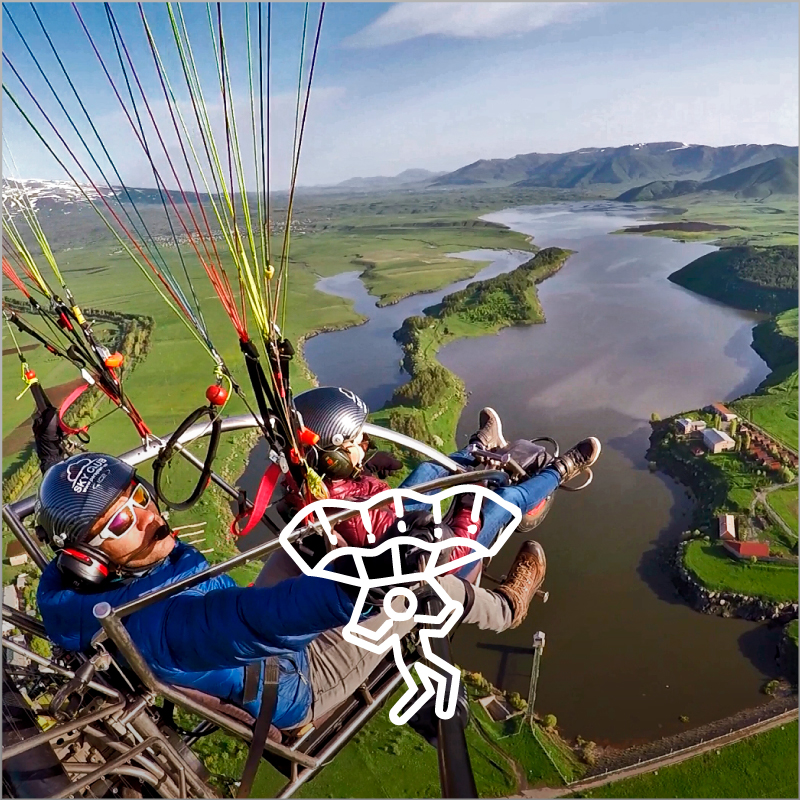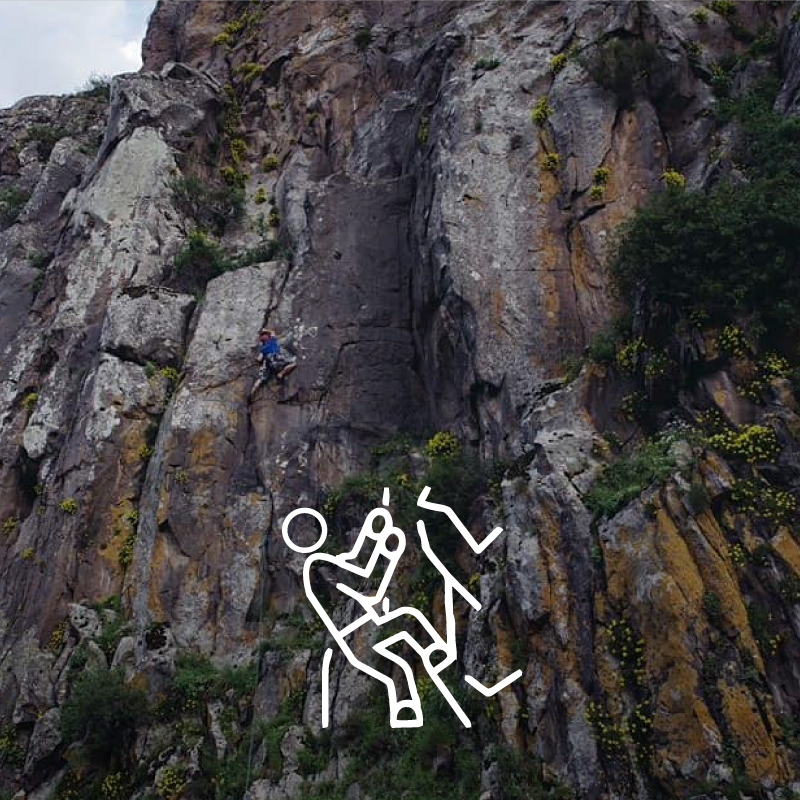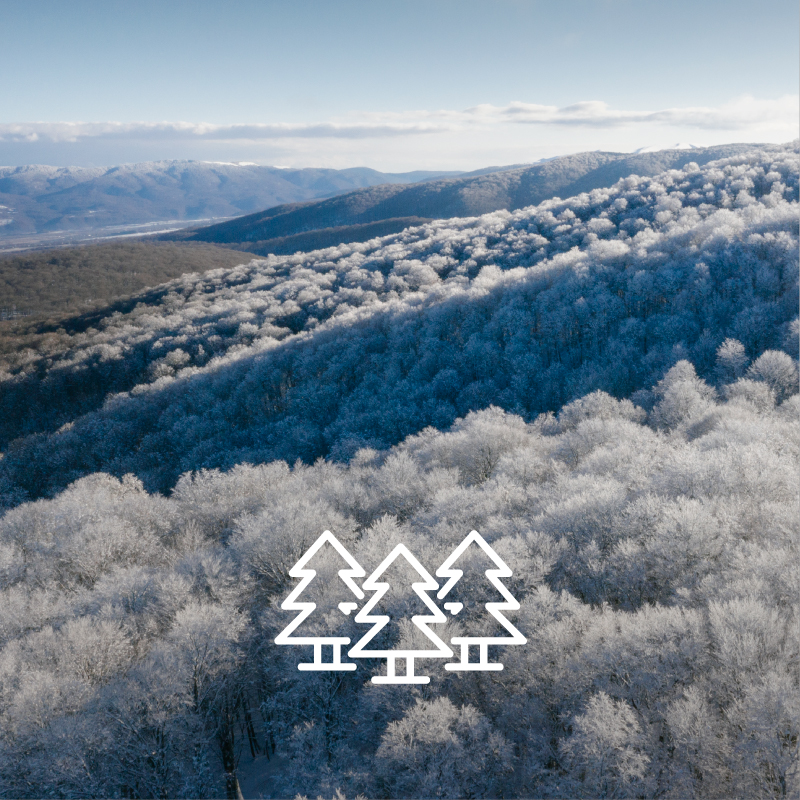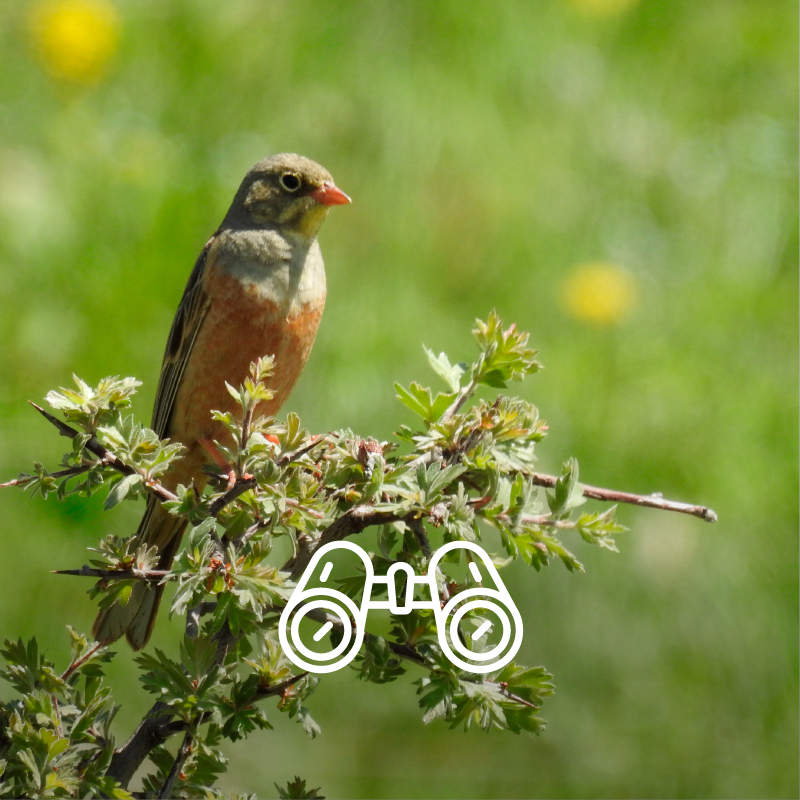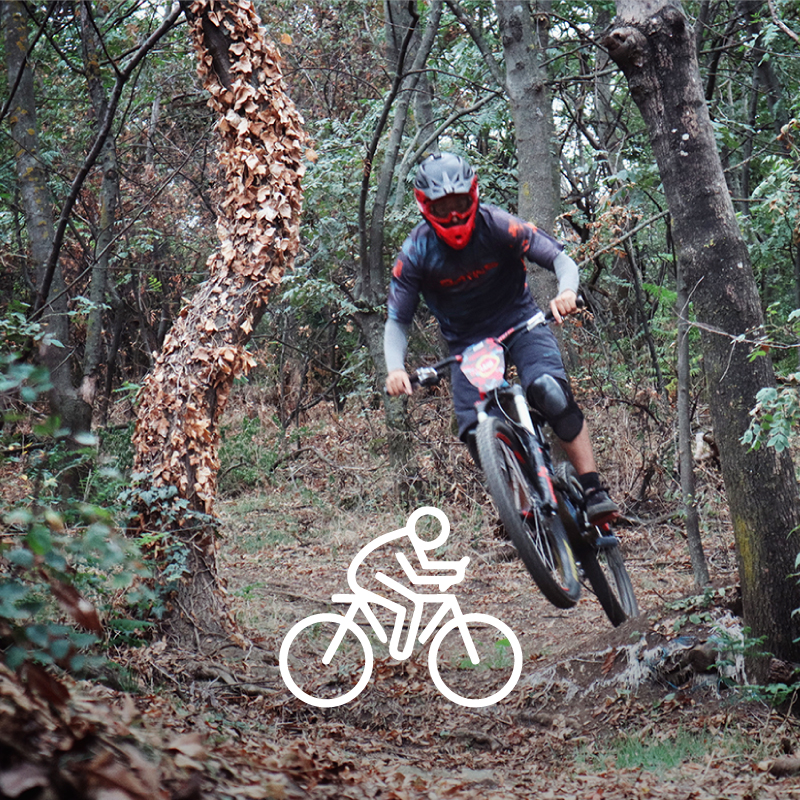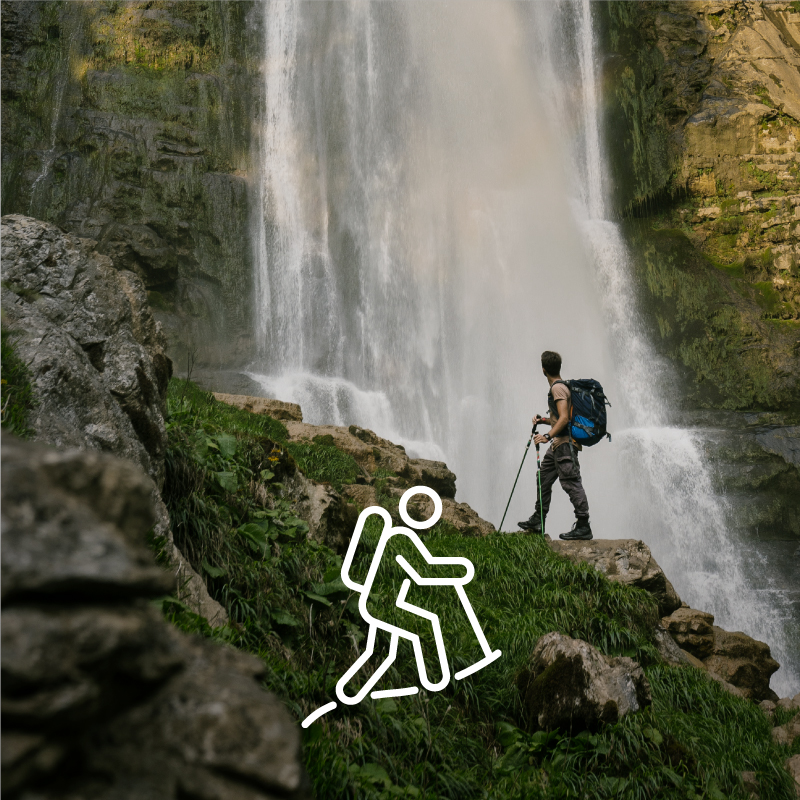Are you seeking to visit the National Parks of Georgia? You will find lots of adventure and unforgettable memories on Georgia’s unique natural heritage National Parks.
The Agency of Protected Areas offer a great source of information for travelers. Click here and here and explore more.
Biliki App suggests!
Algeti National Park
If you are tired of your everyday routine and wish to spend a day in nature, Algeti National Park is a wonderful place to visit. 1.5 hour driving from Tbilisi and 16 km of hiking itinerary is can help you to feel the nature and relax. The round route leads through a beautiful forest with eye-catching panoramic views. The hiking tour starts from Manglisi Church follows a ground road and continues with a trail.
Live your Adventure and Enjoy the trip, download the Biliki App to book the trip!
Caves and Canyons of Imereti
This tour offers you to discover marvellous Natural Monuments of Georgia. You can start a trip from Tbilisi as well as from Kutaisi. During your trip, you will be able to visit the top destinations among the Protected Areas of Georgia such as, Prometheus Cave, Okatse Canyon, Okatse Waterfall, and Sataplia.
Vertiginous tour at Natural Monuments of Imereti will take you on a journey at Okatse Canyon which depth is 140 meters, with 780 meters long hanging trail. You will be able to see stalactites and stalagmites at Prometheus Cave. Do not miss Sataplia Cave and dinosaurs footprints as well.
Live your Adventure and Enjoy the trip, download the Biliki App to book the trip!
Vashlovani National Park
Vashlovani Protected Areas is a mix of National Park and Strict Nature Reserve located in the eastern part of Georgia and was established in 1935 to preserve its unique shallow forests. The area is characterized by its dry climate sitting only 145 meters above sea level.
Tour starts at Dedoplistkaro in Vashlovani Protected Areas Visitors center and continues to Datvis Khevi (The Revine of Bear) which is famous by the footprint of ancient animals and sea molluscs. Do not miss the breathtaking panoramic view at Vashlovani on your way to Datvis Khevi. The trip continues at Alesili Cliffs, where landscape, flora and fauna will remind you of a Safari Tour.
The tour finishes at Mijniskure, which is just a few hundred meters away from the Georgia-Azerbaijan border. Make sure you take some rest by the river where you have an opportunity to stay overnight at the cosy cottages and enjoy sport-fishing at Alazani river as well.
Vashlovani Protected Areas tour gives you a possibility to travel for one or several days, but we recommend to stay at least for two days to enjoy the trip and feel the emotions. The trail is well-marked and tourist infrastructure is comfortably arranged.
Live your Adventure and Enjoy the trip, download the Biliki App to book the trip!
Tour To Takhtitepa Mud Volcanoes
This tour gives you the possibility to discover a far south-east part of Georgia. Vashlovani National Park is located in Dedoplistkaro municipality and it includes Takhtitepa Mud Volcanoes. Takhtitepa Mud Volcanoes are located near Dali Mountain. It is a unique natural monument and exceptional from Georgian nature, even more, it looks like a planet Mars.
On the way, you will see Kilakupra volcanoes are an inorganic natural monument as well as Takhtitepa Mud Volcanoes. Mud and gas are released from volcanoes craters, which has healing properties.
Live your Adventure and Enjoy the trip, download the Biliki App to book the trip!
Lake Arpi National Park in Armenia
Visit Lake Apri National Park in Shirak province for a wonderful experience in the wilderness. As an eco-tourist, you will be excited to hear that the park pursues both traditional – conserving biodiversity – and modern-era goals – promoting sustainable community development.
The 21,000-ha territory of the park ranges in altitude from 2,025 m to 3,196 m.
You can observe a diverse landscape with the mountain steppes and subalpine meadows. Don’t forget about Arpi Parks’ wetlands, which are home to:
- Orchids
- Gladiolus
- Alpine auricula
- Meadow saffron
- The Dalmatian pelican
- Armenian Gull
- Eurasian otter
- Brown bear
- Daverski’s viper
Besides bird watching and observing wildlife, you can have fun with hiking, horse riding, and cross-country skiing.
You can arrange accommodation at a guesthouse in Berdashen and Ardenis village or book a room in a hotel in Torosgyugh village or Gyumri town for a trip to the park.
For your tour’s cultural element, visit the monastery complex of Marmashen or the 5,000-year-old temple at Mets Sepasar and the megalith stones at Zuygaghpur.
It takes nearly 3 hours by car and 4 hours by bus to get to the park, as it sits 180 km from Yerevan.
Dilijan National Park
Locals in Tavush province call Dilijan National Park “Little Armenian Switzerland.” The park was established in 2020 and occupied almost 34,000 ha, ranging in altitude from 1,070 m to as high as 2,900 m.
You will enjoy the woods and fauna of Dilijan Park, but what creates a beautiful view that resembles Switzerland is the lakes and rivers, as well as curative mineral springs and high mountainous areas.
Most importantly, the park preserves its famous natural heritage sites: the yew grove of Aghavnavank, the beech woodlands of Haghartsin, the oak woodlands of Khachardzan, Lake Parz, and Lake Tzlka.
The park is widely known among flower lovers for its beautiful wildflower fields and decorative plants. The area has a wide range of wild fruit, berries, and nuts, which you can purchase along with local honey and mineral water.
If you’re into birdwatching, you can observe the bearded eagle and Caspian snowcock in Dilijan National Park. The park is also home to deer, brown bears, lynx, and wild cats.
You can enroll in birdwatching tours, camp here in the park, take a hike, enroll in climbing sports, boarding, or cross-country skiing. Don’t forget to visit the Haghartsin Monastery – famous for its beautiful white-stone structures and picturesque surroundings.
Good news! Dilijan National Park is quite close to Yerevan. It takes a little over an hour by car and around 2 hours by bus to reach Dilijan Park. For accommodation, you can book rooms in guesthouses and hotels in Dilijan or camp in the park.
Gyulagarak & Ijevan Dendroparks
In the early 1930s, famous biologist Edmond Leonowicz founded Gyulagarak Dendropark in Armenia’s Lori province. And it has been one of the most popular places for eco-tourists to visit in Armenia since then.
The park is a 15ha-large botanical garden, 17.5ha of which is covered with natural forest and 15ha with ornamental plants.
Overall, this arboretum features a wide variety of trees such as magnolia, cypress, pine, oak, lime, etc. Some of the introduced species are from China, Western Europe, and North America.
The park’s altitude is 1,550 meters above sea level. So pack something warm and cozy, because the climate is quite cold in the area.
Ijevan Dendropark is different. It has a subtropical and semi-arid climate, so warm hiking and wildlife observation is guaranteed. The park covers over 15ha and is home to over 600 rare species of plants and flowers.
Note that you can take a little piece of Armenia with you. The parks sell seeds, so you can buy walnut, maple, and other seed varieties and grow them home.
Aragats
You’ll be amazed to see various wildflowers and endemic species on a mountain that has a harsh and unpredictable climate. It’s the highest mountain in Armenia, with its highest peak at 4090 meters above sea level after all.
Multiple cold-water tributaries come down from Aragats, now an extinct volcano with 250 days of winter weather a year. Wild rabbits, foxes, and wolves call the area their home.
The best time to visit and climb mount Aragats is between June and August. The trails are the driest at this time of the year. If you’d like a challenge, the northern summit is the highest and the most difficult to climb.
You will also find it exciting to observe the visitors’ beloved Lake Kari – an alpine lake situated 3,200m above sea level. And don’t forget about the culturally and historically significant Amberd fortress, built during medieval times. You will also come across monuments from earlier eras there.
Hirkan National Park
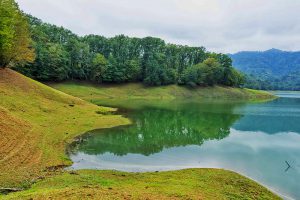 Year of foundation: 2004
Year of foundation: 2004
Area (hectare): 40358
Location: Within the territory of Lankaran and Astara administrative districts.
The Hirkan National Park is in the Lankaran natural region and protects the landscapes of humid subtropics. The Hirkan National Park consists of a valley area of Lankaran lowland and a mountainous landscape of Talysh Mountains. The Lankaran natural region has rich fauna and flora including many rare and endemic species. Flora of the park consists of 1, 900 species including 162 endemics, 95 rare, and 38 endangered species. There is the iron tree, three-thorned acacia (Gleditschia tricanthos), Zelkova, Quercus Castaneifolia, Fircus hyrcanys, etc. There are many endemics are rare animals, particularly, among the representatives of ground mollusks and non-flying insects. Birds’ endemism is well represented, up to subspecies level, while the species level has a relatively poor representation. The main protected objects are the natural complexes of lowland and low mountainous forest areas of the Lankaran natural region, including the unique well-preserved plot of lower forest, the ecosystem of the rare forest of the Hirkan type.
Trails
Trail length: 12 km
Duration: 6 – 7 hours
Age rage for trail: above 14 years
Deadline for staying in trail: in summer season till 20:00, in winter season- till 17:00
Trail type (way of movement): by horse or on foot
Trail category: hard
Appliances needed for trail: drinking water, comfortable walking shoes
Trail length: 16 km
Duration: 9-10 hours
Age rage for trail above 14-15 years (physically healthy)
Deadline for staying in trail: –
Trail type (way of movement): by horse, on foot
Trail category: hard
Appliances needed for trail: drinking water, food, walking stick, comfortable clothing
Trail length: 42 km from administration buidling of National Park 4.5km from entering gate located in Alasha village
Duration: 4.5-5 hours
Age rage for trail: all age rages
Trail type (way of movement): by car, partly on foot
Trail category: easy
Appliances needed for trail: drinking water, binocular, comfortable walking shoes
Trail length: 42
Duration: 5-6 hours
Age rage for trail: all age rages
Deadline for staying in trail: –
Trail type (way of movement): first by car then by foot
Trail category: medium hard
Appliances needed for trail: drinking water, binocular, comfortable shoes
Trail length: 1,4 km
Duration: 1,5 hours
Age rage for trail: all age rages
Deadline for staying in trail: –
Trail type (way of movement): on foot
Trail category: easy
Appliances needed for trail: drinking water, binocular, comfortable
walking shoes etc.
Trail length: -3,5 km
Duration: 2,5 – 3 hours
Age rage for trail above 12 years
Deadline for staying in trail: –
Trail type (way of movement): on foot
Trail category: medium hard
Appliances needed for trail: drinking water, binocular, comfortable walking shoes etc.
Trail length: – 4 km
Duration: 5 hours
Ageragefor trail: above 14 years
Deadline for staying in trail: –
Trail type (way of movement): on foot
Trail category: hard
Appliances needed for trail: drinking water, binocular, comfortable walking shoes etc.
Trail length: ~15 km Bulaqlar
Duration: 2,5 – 3 hours
Age rage for trail above 12 years
Deadline for staying in trail: in summer season till 20:00, in winter season- till 17:00
Trail type (way of movement): by car, on foot
Trail category: medium hard
Appliances needed for trail: binocular, comfortable walking shoes etc.
Trail length: ~1.5 km
Duration: 1,5 hours
Age rage for trail: all age rages
Waterfall Deadline for staying in trail: –
Trail type (way of movement): on foot
Trail category: easy
Appliances needed for trail: drinking water, comfortable walking shoes
Trail length: 6 km
Duration: 1-2 hours Springs
Age rage for trail: all age rages
Deadline for staying in trail: in summer season till 20:00, in winter season till 17:00
Trail type (way of movement): to the forest — by car, then- on foot
Trail category: easy
Appliances needed for trail: drinking water, comfortable walking shoes etc.
Trail length: 2 km
Duration: 1 hour
Age rage for trail: all age rages
Deadline for staying in trail: in summer season till 20:00, in winter j N Waterfall season till 17:00
Trail type (way of movement): to the forest — on foot, by car, by bicycle or by horse
Trail category: easy
Appliances needed for trail: drinking water, binocular, comfortable walking shoes etc.
Shirvan National Park
Year of foundation: 2003
Area (hectare): 54373,5
Location: Within the territory of Salyan administrative district as well as Garadagh and Neftchala districts of Baku city.
The Shirvan National Park was established on the base of the Shirvan State Reserve founded in 1969 and neighboring areas. The reserve ‘s activity is focused on the protection and reproduction of the Persian gazelle (Gazella sulgutturosa), waterfowl birds, and typical plant biotypes of the Shirvan Lowland. The area is 25800 hectares, of which 3500 hectares are water reservoirs. The territory of the park used to be at the bottom of the Caspian and at present it is an accumulative plain, which is 20-25 m below sea level with a slight increase in the relief westwards. In terms of climate, the park lies in an area of moderate warm semi-desert and arid steppe. Summers are hot and dry, and winters are moderate and dry. In the park, there are several types of vegetation. The desert type is represented by Halocnemum, Halostachys, and Salicornia formations developed on solonchaks. Halocnemum vegetation occupies about 40% of the territory of the park. The main species is the Halocnemum strobilaceous. The Halostachys phylogenesis has a more complicated structure and a richer species composition than halocnemum. At the tops of the hills, halostachys grows and the slopes are covered by cereals and motley grass from the ephemeral group. Salicornia vegetation has developed in a small area of the central part of the park because of wet salines and the high level of groundwaters. As well as Salicornia europaea, there is also rankenive and tonkokhstnik.
Trails
Trail length: 11 km
Duration: on foot ~ 3 hours, by car— 1,15 hours
Age rage for trail: all age rages
Deadline for staying in trail: in summer season till 20:00, in winter till 17:00
Trail type (way of movement) — by car, on foot
Trail category: medium hard
Appliances needed for trail: car, drinking water, binocular, comfortable walking
shoes, rubber shoesin rainy weather
Trail length: 10 km
Duration: on foot ~ 3 hours, by car— 1 hour
Age rage for trail: all age rages
Deadline for staying in trail: in summer season till 20:00, in winter till 17:00
Trail type (way of movement) — by car, on foot
Trail category: medium hard
Appliances needed for trail: car, drinking water, binocular, comfortable walking
shoes, rubber shoesin rainy weather
Trail length: 6 km
Duration: on foot ~ 2 hours, by car— 45 minutes
Age rage for trail: all age rages
Deadline for staying in trail: in summer season till 20:00, in winter till 17:00
Trail type (way of movement) — by car, on foot
Trail category: medium hard
Appliances needed for trail: car, drinking water, binocular, comfortable walking shoes
Trail length: 300 m
Duration: 30 minutes
Age rage for trail: all age rages
Deadline for staying in trail: in summer season till 20:00, in winter till 17:00
Trail type (way of movement) — on foot
Trail category: easy
Appliances needed for trail: car, drinking water, binocular, comfortable walking shoes,
Trail length: 300 m
Duration: 30 minutes
Age rage for trail: all age rages
Deadline for staying in trail: in summer season till 20:00, in winter till 17:00
Trail type (way of movement) — on foot
Trail category: easy
Appliances needed for trail: car, drinking water, binocular, comfortable walking shoes
Trail length: 31 km
Duration: by car 3.5 hours
Age rage for trail: above 18 years
Deadline for staying in trail: in summer season till 20:00, in winter till 17:00
Trail type (way of movement) — only by 4X4 car in non-rainy weather
Trail category: medium hard
Appliances needed for trail: 4X4 vehicle, drinking water, binocular, comfortable walking shoes
Trail length: 23-25 km
Duration: by car — 2.5 hours
Age rage for trail: above 18 years
Deadline for staying in trail: in summer season till 20:00, in winter till 17:00
Trail type (way of movement) — only by 4X4 car in non-rainy weather
Trail category: medium hard
Appliances needed for trail: 4X4 vehicle, drinking water, binocular, comfortable walking shoes
Trail length: 27-29 km
Duration: by car ~3 hours
Age rage for trail: above 18 years
Deadline for staying in trail: in summer season till 20:00, in winter till 17:00
Trail type (way of movement) — only by 4X4 car in non-rainy weather
Trail category: medium hard
Appliances needed for trail: 4X4 vehicle, drinking water, binocular, comfortable walking shoes
Trail length: 27-29 km
Duration: by car ~3 hours
Age rage for trail: above 18 years
Deadline for staying in trail: in summer season till 20:00, in winter till 17:00
Trail type (way of movement) — only by 4X4 car in non-rainy weather
Trail category: medium hard
Appliances needed for trail: 4X4 vehicle, drinking water, binocular, comfortable walking shoes
Trail length: 30-31 km
Duration: 3.5 hours
Age rage for trail: above 18 years
Deadline for staying in trail: in summer season till 20:00, in winter till 17:00
Trail type (way of movement) — only by 4X4 car in non-rainy weather
Trail category: medium hard
Appliances needed for trail: 4X4 vehicle, drinking water, binocular, comfortable walking shoes
Trail length: 15 km
Duration: on foot — 4 hours, by car — 1.30 hours
Age rage for trail: all age rages
Deadline for staying in trail: in summer season till 20:00, in winter till 17:00
Trail type (way of movement) — by car, on foot
Trail category: medium hard
Appliances needed for trail: 4X4 vehicle, drinking water, binocular, comfortable walking shoes
Agh-Gol National Park
Year of foundation: 2003
Area (hectare): 17924
Location: Within the territory of Agjabedi and Beylagan administrative districts.
The Agh-Gol National Park was established for the preservation of migrating routes, areas of wintering and nesting of waterfowl and water birds, as well as for breeding of commercial fish species. The area of 4400 hectares covers the water area of Lake Ag-Gel. Lake Ag-Gel (white lake) reserve is situated in the Mill steppe of the Kura-Araks Lowlands, it may be called an “ornithological oasis”: this is not only a reserved area but one of the most important places of wintering in the Republic. The Mill Steppe surrounding the lake is a slightly hilly accumulative plain, where mostly semi-desert and arid steppe type: summer is warm and dry, winter is cool. Twenty fish species inhabit the reserve: pike, erythroculter, mongolicus, carp, and others. Earlier, when the lake related to the River Kura, the Ichthiofauna was richer. Among amphibians, green toad, Hylidae, lake trod, and others inhabit the reserve. Among reptiles, the Caspian and swamp turtles, common and water grass snakes occur. There are 134 bird species in the orilitofauna of the reserve, including 89 nesting birds. There are more than 30 specimens of Charadriiformes and 24 specimens of Anseriformes. Among the birds occurring here, there are species included in the “Red Book” — Francolinus, white-tailed eagle, white pelicans (Pelecanus onocrotalus), Dalmatian pelicans (Pelecanus Crispus), and others. Among mammals, represented by 22 species, wild boar, coypu, and jungle cat (Felis chaus) are common, Unique colonial nesting places of Ciconifonnes and Totimplate birds (Pelecanifonnes) are preserved here, which are of great scientific and practical interest. The main protected objects are the water–swamp ecosystem of Lake Agh-Gol, places of mass nesting, places of rest during migration, and wintering for waterfowl and coastal birds.
Trails
Trail length: 5 km
Duration: 3 hours
Age rage for trail 10-70
Deadline for staying in trail: in summer season- till 20:00, in winter
season – till 17:00
Trail type (way of movement) — by car and on foot
Trail category: easy
Appliances needed for trail: binocular, food, drinking water, comfortable walking shoes
Trail length: 5 km
Duration: 4 hours
Age rage for trail: 10-70
Deadline for staying in trail: in summer season — till 20:00, in winter
season till 17:00
Trail type (way of movement) — by car and on foot
Trail category: easy
Appliances needed for trail: telescope, food, drinking water, comfortable walking shoe
Trail length: 7 km
Duration: 5 hours
Age rage for trail: 10-70
Deadline for staying in trail: in summer season till 20:00, in winter
season- till 17:00
Trail type (way of movement) — by car and on foot
Trail category: easy
Appliances needed for trail: binocular, food, drinking water, comfortable walking shoes
Trail length: 12 km
Duration: 4 hours
Age rage for trail: 10-70
Deadline for staying in trail: in summer season till 20:00, in winter season till 17:00
Trail type (way of movement): by car and on foot
Trail category: easy
Appliances needed for trail: binocular, food, drinking water, comfortable walking shoes
Trail length: 10 km
Duration: 3-4 hours
Age rage for trail: 10-70
Deadline for staying in trail: in summer season — till 20:00, in winter season till 17:00
Trail type (way of movement) — by car and on foot
Trail category: medium hard
Appliances needed for trail: binocular, food, drinking water, comfortable walking shoes
Trail length: 18 km
Duration: 5-6 hours
Age rage for trail: 10-70
Deadline for staying in trail: in summer season — till 20:00, in winter season till 17:00
Trail type (way of movement) — by car and on foot
Trail category: medium hard
Appliances needed for trail: binocular, food, drinking water, comfortable walking shoes
Trail length: 20 km
Duration: 6-7 hours
Age rage for trail 10-70
Deadline for staying in trail: in summer season — till 20:00, inwinter season till 17:00
Trail type (way of movement) — by car and on foot
Trail category: medium hard
Appliances needed for trail: binocular, food, drinking water, comfortable walking shoes
Trail length: 8 km
Duration: 6 hours
Age rage for trail: all age rages
Deadline for staying in trail: in summer season — till 20:00, in winter season till 17:00
Trail type (way of movement) — by car and on foot
Trail category: medium hard
Appliances needed for trail: binocular, food, drinking water.
Trail length: 10 km
Duration: 7 hours
Age rage for trail: all age rages
Deadline for staying in trail: in summer season — till 20:00, in winter season till 17:00
Trail type (way of movement) — by car and on foot on non-rainy days
Trail category: medium hard
Appliances needed for trail: binocular, food, drinking water.
Zangazur National Park named after Academician Hasan Aliyev
Year of foundation: 2009
Area (hectare): 42797,4
Location: Lesser Caucasus, Nakhchivan Autonomous Republic
Zangazur National Park was created on 25 November 2009 in an area of 42797,4 hectares on the base of Ordubad National Park named after Academician Hasan Aliyev and Shahbuz State Nature Reserve in the Nakhchivan Autonomous Republic. It was named after Academician Hasan Aliyev who is considered as a founder of ecology in Azerbaijan. Adjoining the National Park is Ordubad State Nature Sanctuary with an area of 27870 hectares. The objective pursued in the creation of Zangazur National Park was to protect different components of the area which has a distinctive climate, terrain, and other physical geographical features as well as various animal species including endemics and species of fauna that are typical to this area. The Park is also charged with the task to facilitate environmental monitoring and promote education and tourism. Zangazur’s range of mountains reaching 3200 meters on average is the highest range of the Lesser Caucasus. The highest peak of the range making 3906 meters is in the National Park. The last third part of the Zangazur range is Soyug Dagh (Cold Mountain) which also belongs to the National Park’s area. The height of Soyug Dagh varies within a range of 2000 to 3000 meters. This part of the mountain slopes down for 12 km to south and west. It comprises steep slopes with precipices and narrow spring valleys. Eroded rocks are widespread here. In Soyuq Dagh, ancient glacial relief declines and finally disappears downwards. Zangazur National Park is a mountainous area. Its climate is generally cold characterized by dry summer. The mean temperature is -30 °C to -10 °C in January and 10 °C 25 °C in July. The annual precipitation is 300-800 mm. The watercourse network of the region is composed of Gilanchay, Vanadchay, Duylunchay, Aylishchay, Ganzachay, Kotamchay, Kilitchay, and Ordubadchay rivers. They are fed by rains and melting snow. The Araz River forms the border with Iran. The landscape of the area varies in type. Mainly, dull brown, grassland dull brown, alluvial grassland, mountainous forest, turf-type mountainous grassland terrains prevail in the area. Nakhchivan Autonomous Republic is a distinguished place in Azerbaijan for the richness of its ornitofauna. There are 217 bird species and subspecies in the region of which 15 species are listed in the Red Data Book. These are Levant Sparrowhawk, great white pelican, dalmatian pelican, white-tailed eagle, lammergeyer, short-toed eagle, great bustard, little bustards, and other birds. Six species of amphibians occur in Nakhchivan Autonomous Republic. Thirty-eight species and subspecies of reptiles are found in Nakhchivan Autonomous Republic. Of them, five are turtles, twelve species, and sub-species of snakes. Mediterranean spur-thighed tortoise, Caucasian pit viper, Trans-Caucasian rat snake are all under protection and listed in the Red Data Book. Sixty-two mammal species and subspecies occur in Nakhchivan. Thirty-two of them are found in the Zangazur National Park and Ordubad State Nature Sanctuary. These are blazilius horseshoe bat, southern horseshoe bat, porcupine, manul, bezoar goat, Caucasian muflon to mention a few. The Park is a habitat for several carnivorous animals such as leopard, wolf, jackal, fox, striped hyena, badger, wild cat, and other predators numbering 12 species in total. Zangazur National Park is also rich in rare plants, 77 grow in the Park’s area. Iris elegantissima, Himantoglossum formosum, Dorema glabrum, and other plants can be found here. Along with the diverse flora and fauna, the Zangazur National Park is the place where there are a lot of natural and historical monuments.
Absheron National Park
Year of foundation: 2005
Area (hectare): 783
Location: Khazar district of Baku city, Absheron peninsula.
Absheron National Park was established based on the Absheron State Nature Sanctuary in 783 ha area of administrative territory of Baku city Khazar district with the decree of the President of the Republic of Azerbaijan dated February 8, 2005. The National Park is situated in the south-eastern end of the Absheron peninsula in the Shah Dili territory. A mild hot climate of semi-desert and dry heathens prevails in the territory. The purpose of the establishment of Absheron National Park is the provision of protection of wildlife, maintenance of rare, endangered flora and fauna species, as well as evaluation of existing natural opportunities for ecotourism. More than 50 bird and animal species are encountered in Absheron National Park. Nearly 25 plant species exist in the National Park.
Trails
Trail length: 800 meters
Duration: 1.5 hour
Age rage for route: above 6 years
Deadline for staying in route: in summer season till 20:00, in winter season till 17:00
Route type (way of movement) — on foot
Route category: medium hard
Appliances needed for route: drinking water, tourist clothing, food, binocle and other needed appliances
Trail length: 22 km
Duration: 3-4 hours
Age rage for trail: all age rages
Deadline for staying in trail: in summer season- till 20:00, in winter season — till 17:00
Trail type (way of movement):by car
Trail category: easy
Appliances needed for trail: binocular, compass, drinking water
Trail length: 8 km
Duration: 4-5 hour
Age rage for trail: above 12 years
Deadline for staying in trail: in summer season till 20:00, in winter season till
Trail type (way of movement) — on foot
Trail category: medium hard
Altyaghach National Park
Year of foundation: 2004
Area (hectare): 11035
Location: Within the territory of Khyzy and Siyazan administrative districts.
Altiaghaj National Park was established in August 2004. The National Park is in Khizi and Siyazan regions. It was created in an area of 11 035 hectares on the base of Altiaghaj State Natural Reserve and adjacent state-owned forest lands. The main objective is the creation of the National Park is to ensure the conservation of basic components of the natural landscape of the southeastern slopes of the Greater Caucasus, the rehabilitation of flora and fauna species, the implementation of environmental education along with tourism and recreation. Brown forest mountainous, humic carbon forest mountainous, steppe grassland mountainous, and other types of terrains are found in the National Park’s area. The climate here is moderately warm and dry both in winter and summer. The largest river in the area is Atachay. Taking its origin at a height of 1870 meters in Dubrar Mountain the Atachay river flows into the Caspian Sea. A major part of the park is composed of areas covered with forests. The main tree species are Caucasian oak, Caucasian hornbeam, oriental beech, ash, and birch. Shrub species occurring in the area include hawthorn, dogrose, and blackberry. Roe deer, brown bear, wild boar, lynx, raccoon, hair, fox, squirrel, wolf of mammals and pheasant, partridge, eagle, thrush, goatsucker, ringdove of birds are found in the National Park.
Trails
Trail length: 12 km
Duration: 2-3 hours
Age rage for trail: all age rages
Deadline for staying in trail: in summer season — till 20:00, in winter season till 17:00
Trail type (way of movement) — by car
Trail category: easy
Appliances needed for trail: binocular, compass, drinking water
Trail length: 22 km
Duration: 3-4 hours
Age rage for trail: all age rages
Deadline for staying in trail: in summer season — till 20:00, in winter season till 17:00
Trail type (way of movement) — by car
Trail category: easy
Appliances needed for trail: binocular, compass, drinking water
Trail length: 24 km
Duration: 3-5 hours
Age rage for trail: all age rages
Deadline for staying in trail: in summer season — till 20:00, in winter season till 17:00
Trail type (way of movement) — by car
Trail category: easy
Appliances needed for trail: binocular, compass, tent, sleeping bag
Trail length: 18 km
Duration: 4-5 hours
Age rage for trail: above 18 years
Deadline for staying in trail: in summer season — till 20:00, in winter season till 17:00
Trail type (way of movement) — on foot, the rest by car
Trail category: hard
Appliances needed for trail: binocular, compass, drinking water
Trail length: 14 km
Duration: 2-3 hours
Age rage for trail: all age rages
Deadline for staying in trail: in summer season — till 20:00, in winter season till 17:00
Trail type (way of movement) — by car
Trail category: medium hard
Appliances needed for trail: binocular, compass
Trail length: 17 km
Duration: 2-3 hours
Age rage for trail: above 18 years
Deadline for staying in trail: in summer season — till 20:00, in winter season till 17:00
Trail type (way of movement) — on foot, the rest by car
Trail category: easy
Appliances needed for trail: binocular, compass
Trail length: 42 km
Duration: 5-6 hours
Age rage for trail: all ages rage
Deadline for staying in trail: in summer season — till 20:00, in winter season till 17:00
Trail type (way of movement) — by car
Trail category: easy
Appliances needed for trail: binocular, compass, drinking water
Trail length: 13 km
Duration: 2-3 hours
Age rage for trail: all ages rage
Deadline for staying in trail: in summer season — till 20:00, in
winter season till 17:00
Trail type (way of movement) — by car
Trail category: easy
Appliances needed for trail: binocular, compass, drinking water
Goygol National Park
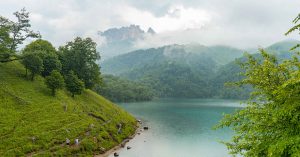 Year of foundation: 2008
Year of foundation: 2008
Area (hectare): 12755
Olduğu yer: territory of Goygol, Dashkasan, and Goranboy districts.
Goygol National Park was established on April 1, 2008, by the Order of the President of Azerbaijan Republic on the base of Goygol State Nature Reserve in the administrative territory of Goygol, Dashkasan, and Goranboy districts. After having the status of National Park, the territory of Goygol State Nature Reserve enlarged from 6739 hectares up to 12 755 hectares. Goygol National Park is located on the North-East part of Lesser Caucasus, on the North Slope of Kapaz Mountain, on 1000-3060 m high from the sea level and encloses medium and high mountain-forest semitones, mountain forest-meadow, subalpine and alpine zones. National Park is called by the name of Goygol Lake. And the reason for that is its transparent water which reflects surrounding green forests and blue sky as a mirror. The principal aim of the establishment of Goygol National Park is protection endemic and endangered flora and fauna species, regulation of the stability of natural complexes, creation of more favorable condition to carry out scientific research works, environmental monitoring, ecological awareness of population and development of ecotourism in the tourist potentially areas. Cold climate with dry winter prevails in the area. The annual temperature of the weather wavers between 4-10 degrees. Annual precipitation is 600-900 mm. The longest river in Goygol National Park is the Aghsuchay – the right branch of the Kurakchay.
The biggest lake in the area is Goygol – one of the most wonderful and marvelous lakes in Azerbaijan. In 1939 because of the earthquake that occurred in Ganca, Kapaz mountain was tumbled down, blocked up the Aghsuchay river, and the beautiful lake – Goygol was formed. There are small lakes, such as Maralgol, Garagol, Zeligol, Aggol, Shamligol etc. in the area. The main part of the national park has a rich vegetation cover. The mountain-forest, mountain-steppe, subalp, and alpine mountain-meadow vegetation ecosystem are spread in the area. The mountain forests covering 1100-2200 m height have a very rich vegetation cover and contain 80 trees and bush species. The main part of the forests is represented by oriental beech, oriental oak, Caucasian hornbeam, birch, ash tree, sharp-leaved maple, lime-tree of small-leaved trees, Kokh pine of coniferous. Of shrubs, cornel, barberry, dog rose, medlar, spindle-tree, blackberry, of herbs, Caucasian violet, dandelion, bellflower, noble chamomille, fescue, mat-grass and meadow-grass etc. are met. They are especially spread in subalpine meadows. Goygol National Park is also rich for its fauna. Of mammals, Caucasian red deer, roe deer, brown bear, billy goat, badger, forest cat, sable, lynx, hare, squirrel, fox, hedgehog, Caucasian mole etc.., of bird’s quail, stock dove, woodcock, bearded vulture, black vulture, Egyptian vulture, eagle owl, owl, swan, black woodpecker, golden oriole, woodlark, mistle thrush etc. are spread in the area. Rare species – Caucasian red deer and forel fish (in Goygol lake) are protected in the national park. The beautiful and variegated nature, rich flora, and fauna of Goygol National Park will enable to organization and development of ecotourism in the area by attracting tourists and visitors.
Trails
Trail length: 7 km from Administration building (entering gate) to Goygol lake, to Maralgol lake – 14 km
Duration: 1 hour — by car, 4 hours — on foot
Age rage for trail: all age rages
Deadline for staying in trail: –
Trail type (way of movement): by car, on foot
Trail category: easy
Appliances needed for trail: comfortable clothing, drinking water, food etc.
Trail length: 7 km from administration building (entering gate) to Goygol lake, to Garagol 1 – 9 km
Duration: 15 minutes — by car, 1 hour — on foot
Age rage for trail: above 10 years
Deadline for staying in trail: –
Trail type (way of movement): by car, on foot
Trail category: easy
Appliances needed for trail: comfortable clothing, drinking water, food etc.
Trail length: 7 km from administration building (entering gate) to Goygol lake, to Gushoglu lake – 10 km
Duration: 20 minutes — by car, 3 hours — on foot
Age rage for trail: above 10 years
Deadline for staying in trail: –
Trail type (way of movement): by car, on foot
Trail category: easy
Appliances needed for trail: comfortable clothing, drinking water, food etc.
Trail length: 7 km from Administration building (entering gate) to Goygollake, to Agsuchay — 11 km
Duration: 40 minutes by car, on foot part — 3 hours
Age rage for trail above 12 years
Deadline for staying in trail: – ‘
Trail type (way of movement): by car, on foot
Trail category: easy
Appliances needed for trail: drinking water, comfortable clothing etc.
Trail length: 3 km from Administration building (entering gate) to Gozgol lake, to
Goygol lake — 8 km,
Duration: 20 minutes by car, on foot part — 2 hours
Age rage for trail: all age rages
Deadline for staying in trail: – ‘
Trail type (way of movement): by car, on foot
Trail category: easy
Appliances needed for trail: drinking water, comfortable clothing etc.
Trail length: Administration building (entering gate) to Ordekgolu lake — 1 km, ” to Goygol lake — 8 km
Duration: 20 minutes by car, on foot part — 3 hours
Age rage for trail: all age rages
Deadline for staying in trail: – ‘
Trail type (way of movement): by car, on foot
Trail category: easy
Appliances needed for trail: drinking water, comfortable clothing etc.
Trail length: 4 km from Administration building (entering gate) to Garagollake, to, lzgugol — 6 k
Duration: 1 hour by car, on foot part — 3 hours
Age rage for trail: above 10 years
Deadline for staying in trail: – ‘
Trail type (way of movement): on foot (in exceptional cases — by car)
Trail category: easy
Appliances needed for trail: comfortable clothing, drinking water, food etc.
Trail length: 8 km from Administration building (entering gate) to Shamlig golu, to Khanyurdu — 15 km
Duration: 3 hours by car
Age rage for trail: above 10 years
Deadline for staying in trail: –
Trail type (way of movement): by car and by horse
Trail category: medium
Appliances needed for trail: comfortable clothing related to season, tent, drinking
water, food etc.
Trail length: 20 km from Administration building (entering gate) to Kapazdagi
Duration: after travelling by car 18 km, travelling on foot 2 km to Kepezdagi peak will take 2 hours and 30 minutes
Age rage for trail: above 12 years
Deadline for staying in trail: –
Trail type (way of movement): by car, on foot
Trail category: hard
Appliances needed for trail: comfortable clothing related to season, tent, drinking
water, food etc.
Trail length: 22 km from Administration building (entering gate)
Duration: 2 hours by car
Age rage for trail: above 12 years
Deadline for staying in trail: –
Trail type (way of movement): by car
Trail category: medium
Appliances needed for trail: tent, drinking water, tourist clothing related to season, food etc.
Shahdagh National Park
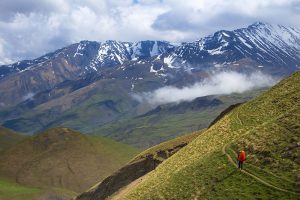 Year of foundation: 2006
Year of foundation: 2006
Area (hectare): 115895
Location: territory of Guba, Gusar, Ismayilli, Gabala, Oghuz, and Shamakhi districts
Brief description: Shahdag National Park was established in accordance with the decree of the President of the Republic of Azerbaijan № 1814, dated December 8, 2006. Its territory is primarily 115895 ha. Ismayilli and Pirgulu State Nature Reserves consist of 21014 ha, state forest foundation lands located in the administrative territories of Guba, Gusar, Ismayilli, Gabala, Oghuz, and Shamakhi regions compose 81797 ha and useless summer pastures in mountains situated in the heights of boundaries of those regions compose 13084 ha of the National Park. The territory of the National Park was enlarged 14613 ha with the decree of the Cabinet of Ministers of the Republic of Azerbaijan № 193/S, dated July 8, 2010, hence its territory was reached 130508 ha. The aim of the establishment of the Shahdag National Park is rehabilitation, maintenance, and management of global mountain forests and pasture ecosystems located in high mountainous areas including various endemic and endangered species and transboundary migratory animals, preservation of fertile soil layer, protection, reproduction, and enrichment of fauna and flora species characteristic for the area, as well as regulation of natural complex stability, the offer of all necessary facilities for the implementation of scientific-research works, environmental monitoring, environmental enlightenment of population and provision of development of ecotourism in the territory which has great tourism potential. The height of the National Park territory has substantially caused its climatic diversity, fertility of flora soils, and richness of animal planet. The forests located in the territory are popular with rich, fascinating, and picturesque landscapes. Vertical fluctuation and scatter of relief, complex climate conditions, and soil lay have triggered a great diversity of flora.
Trails
Trail length: 9 km
Duration: ~3 hours
Age rage for trail above 12 years
Deadline for staying in trail: –
Trail type (way of movement) — on foot, one part — by bicycle, in
exceptional cases — by car
Trail category: medium hard
Appliances needed for trail: drinking water, binocular, comfortable walking shoes
Trail length: 4 km
Duration: ~3 hours
Age rage for trail: above 12 years
Deadline for staying in trail: –
Trail type (way of movement) — on foot, one part — by bicycle, in
exceptional cases — by car
Trail category: medium hard
Appliances needed for trail: drinking water, binocular, comfortable walking shoes
Trail length: 8 km
Duration: 1-2 hours
Age rage for trail: above 12 years
Deadline for staying in trail: –
Trail type (way of movement) — on foot, by bicycle, in exceptional
cases — by car
Trail category: medium hard
Appliances needed for trail: drinking water, binocular, comfortable walking shoes
Trail length: 4 km
Duration: 2 hours
Age rage for trail: above 12 years
Deadline for stayingin trail –
Trail type (way of movement) — on foot, by bicycle, in exceptional cases — by car
Trail category: medium hard –
Appliances needed for trail: drinking water, binocular, comfortable walking shoes
Trail length: 3 km
Duration: 1 hour
Age rage for trail above 12 years
Deadline for staying in trail –
Trail type (way of movement) — on foot, by bicycle, in exceptional cases — by car
Trail category: medium hard
Appliances needed for trail: drinking water, binocular, comfortable walking shoes
Trail length: 4 km
Duration: ~2 hours
Age rage for trail above 12 years
Deadline for staying in trail: –
Trail type (way of movement) — on foot, one part — by bicycle, in exceptional cases — by car
Trail category: medium hard
Appliances needed for trail: drinking water, binocular, comfortable walking shoes
Trail length: 5 km
Duration: ~2 hours
Age rage for trail above 12 years
Deadline for staying in trail:
Trail type (way of movement) — on foot, in exceptional cases — by car
Trail category: medium hard
Appliances needed for trail: drinking water, binocular, comfortable walking shoes
Trail length: 8 km
Duration: ~3 hours
Age rage for trail above 12 years
Deadline for staying in trail: –
Trail type (way of movement) on foot, one part — by bicycle, in exceptional cases — by car
Trail category: medium hard
Appliances needed for trail: drinking water, binocular, comfortable walking shoes
Trail length: 5 km
Duration: ~3 hours
Age rage for trail above 12 years
Deadline for staying in trail: –
Trail type (way of movement) — on foot, by bicycle, in exceptional cases — by car
Trail category: medium hard
Appliances needed for trail: drinking water, binocular, comfortable walking shoes
Trail length: 5 km
Duration: ~3 hours
Age rage for trail: above 18 years
Deadline for staying in trail: –
Trail type (way of movement) — on foot, by bicycle, in exceptional cases — by car
Trail category: medium hard
Appliances needed for trail: drinking water, binocular, comfortable walking shoes
Trail length: 24 km
Duration: 2-3 days
Age rage for trail: above 18 years
Deadline for staying in trail: –
Trail type (way of movement) — on foot, by bicycle, in exceptional cases — by car
Trail category: hard
Appliances needed for trail: drinking water, binocular, comfortable walking shoes
Trail length: 25 km
Duration: 2-3 days
Age rage for trail: above 18 years
Deadline for staying in trail: –
Trail type (way of movement) — on foot, by horse, in exceptional
cases — by car
Trail category: hard
Appliances needed for trail: drinking water, binocular, comfortable walking shoes etc.
Trail length: 22 km
Duration: 2-3 days
Age rage for trail: above 18 years
Deadline for staying in trail: –
Trail type (way of movement) — on foot, by horse, in exceptional
cases — by car
Trail category: hard
Appliances needed for trail: drinking water, binocular, comfortable walking shoes etc.
Trail length: 14 km
Duration: 3 days
Age rage for trail: above 18 years
Deadline for staying in trail: in summer season till 20:00, in winter season till 17:00
Trail type (way of movement) — by horse or on foot
Trail category: medium hard
Appliances needed for trail: tourist clothing, tent, sleeping bag, food, binocular, and other needed appliances
Trail length: 22 km
Duration: 3 days
Age rage for trail: above 18 years
Deadline for staying in trail: in summer season till 20:00, in winter season till 17:00
Trail type (way of movement) — by horse or on foot
Trail category: medium hard
Appliances needed for trail: tourist clothing, tent, sleeping bag, food, binocular, and other needed appliances
Trail length: 18 km
Duration: 2 days
Age rage for trail: above 18 years
Deadline for staying in trail: in summer season till 20:00, in winter season till 17:00
Trail type (way of movement) — by horse or on foot
Trail category: medium hard
Appliances needed for trail: tourist clothing, tent, sleeping bag, food, binocular, and other needed appliances
Trail length: 32 km
Duration: 3 days
Age rage for trail: above 18 years
Deadline for staying in trail: in summer season till 20:00, in winter season till 17:00
Trail type (way of movement) — by horse or on foot
Trail category: medium hard
Appliances needed for trail: binocular, compass, drinking water and other needed appliances
Trail length: 8 km
Duration: 2 days
Age rage for trail: above 18 years
Deadline for staying in trail: in summer season till 20:00, in winter season till 17:00
Trail type (way of movement) — by horse or on foot
Trail category: medium hard
Appliances needed for trail: tourist clothing, tent, sleeping bag, food, binocular, and other needed appliances
Trail length: 32 km
Duration: 3 days
Age rage for trail: above 18 years
Deadline for staying in trail: in summer season till 20:00, in winter season till 17:00
Trail type (way of movement) — by horse or on foot
Trail category: medium hard
Appliances needed for trail: binocular, compass, drinking water and other needed appliances
Trail length: 24 km
Duration: 3 days
Age rage for trail: above 18 years
Deadline for staying in trail: in summer season till 20:00, in winter season till 17:00
Trail type (way of movement) — by horse or on foot
Trail category: medium hard
Appliances needed for trail: binocular, compass, drinking water comfortable walking shoes, sleeping bag, food, and other needed appliances
Trail length: 32 km
Duration: 4 days
Age rage for trail: above 18 years
Deadline for staying in trail: in summer season till 20:00, in winter season till 17:00
Trail type (way of movement) — by horse or on foot
Trail category: medium hard
Appliances needed for trail: tourist clothing, tent, sleeping bag, food, binocular, and other needed appliances
Trail length: 35 km
Duration: 3 days
Age rage for trail: above 18 years
Deadline for staying in trail: in summer season till 20:00, in winter season till 17:00
Trail type (way of movement) — 3 km by car from Gamarvanvillage, 3 days — on foot
Trail category: hard
Appliances needed for trail: telescope, comfortable walking shoes, a ” food, comfortable clothing and
Trail length: 2.6 km
Duration: 4-5 hours
Age rage for trail above 12 years
Deadline for staying in trail: in summer season till 20:00, in winter season till 17:00
Trail type (way of movement) — 3 km by car from Gamarvanvillage, 3 days — on foot
Trail category: easy
Appliances needed for trail: telescope, comfortable walking shoes
Trail length: 2.9 km
Duration: 8-10 hours
Age rage for trail above 12 years
Deadline for staying in trail: in summer season till 20:00, in winter season till 17:00
Trail type (way of movement) till the starting point of the trail (from Gamarvanvillage to Chomche bulag) — 2 km by car, other 500 metres — on foot
Trail category: easy
Appliances needed for trail: telescope, comfortable walking shoes,
Trail length: 1.4 km
Duration: 12 hours
Age rage for trail above 10 years
Deadline for staying in trail: in summer season till 20:00, in winter season till 17:00
Trail type (way of movement) ill the starting point of the trail (from Lazavillage) — 3 km by car, other part — 1400 meters — on foot
Trail category: easy
Appliances needed for trail: telescope, comfortable walking shoes
Trail length: 6 km
Duration: 8-10 hours
Age rage for trail above 12 years
Deadline for staying in trail: in summer season till 20:00, in winter season till 17:00
Trail type (way of movement) till the starting pointoftrail (from Laza village) 11 km by car, the trailitself — 6 km
Trail category: easy
Appliances needed for trail: telescope, comfortable walking shoes
Trail length: 30 km
Duration: 3 days
Age rage for trail: above 18 years
Deadline for staying in trail: in summer season till 20:00, in winter season till 17:00
Trail type (way of movement) 3 km by car from Lazavillage, 3 days — on foot
Trail category: hard
Appliances needed for trail: telescope, comfortable walking shoes, food, comfortable clothing etc.
Trail length: 3 km
Duration: 6-8 hours
Age rage for trail above 10 years
Deadline for staying in trail: in summer season till 20:00, in winter season till 17:00
Trail type (way of movement) by car from Duruja village, 2-2.5 km on foot
Trail category: easy
Appliances needed for trail: telescope, comfortable walking shoes, food, comfortable clothing etc.
Trail length: 5 km
Duration: 8-10 hours
Age rage for trail above 10 years
Deadline for staying in trail: in summer season till 20:00, in winter season till 17:00
Trail type (way of movement) till the starting point (from Vendam settlement to Duyma Recreation Center) — 4 km by car, other 5 km — on foot
Trail category: easy
Appliances needed for trail: telescope, comfortable walking shoes
Trail length: 2.8 km
Duration: 1.5 hours
Age rage for trail above 12 years
Deadline for staying in trail: in summer season till 20:00, in winter season till 17:00
Trail type (way of movement) on foot, in exceptional cases 2,4 km — by car
Trail category: medium hard
Appliances needed for trail: comfortable walking shoes,
Trail length: 4.5 km
Duration: 2.5 hours
Age rage for trail above 16 years
Deadline for staying in trail: in summer season till 20:00, in winter season till 17:00
Trail type (way of movement) on foot, in exceptional cases 2 km — by car
Trail category: medium hard
Appliances needed for trail: comfortable walking shoes
Trail length: 2.8 km
Duration: 2 hours
Age rage for trail above 12 years
Deadline for staying in trail: in summer season till 20:00, in winter season till 17:00
Trail type (way of movement) on foot, in exceptional cases 2.1 km — by car
Trail category: medium hard
Appliances needed for trail: comfortable walking shoes
Trail length: 7 km
Duration: 3.5 hours
Age rage for trail above 14 years
Deadline for staying in trail: in summer season till 20:00, in winter season till 17:00
Trail type (way of movement) on foot
Trail category: medium hard
Appliances needed for trail: comfortable walking shoes
Trail length: 7.5 km
Duration: 3.5 hours
Age rage for trail above 16 years
Deadline for staying in trail: in summer season till 20:00, in winter season till 17:00
Trail type (way of movement) on foot
Trail category: medium hard
Appliances needed for trail: comfortable walking shoes
Trail length: 5.5 km
Duration: 4 hours
Age rage for trail above 12 years
Deadline for staying in trail: in summer season till 20:00, in winter season till 17:00
Trail type (way of movement) on foot
Trail category: medium hard
Appliances needed for trail: comfortable walking shoes
Trail length: 3.7 km
Duration: 2 hours
Age rage for trail above 12 years
Deadline for staying in trail: in summer season till 20:00, in winter season till 17:00
Trail type (way of movement) on foot, in exceptional cases 0,6 km
Trail category: easy
Appliances needed for trail: comfortable walking shoes
Trail length: 4 km
Duration: 2 hours
Age rage for trail above 12 years
Deadline for staying in trail: in summer season till 20:00, in winter season till 17:00
Trail type (way of movement) on foot
Trail category: medium hard
Appliances needed for trail: comfortable walking shoes
Trail length: 6 km
Duration: 3 hours
Age rage for trail above 15 years
Deadline for staying in trail: in summer season till 20:00, in winter season till 17:00
Trail type (way of movement) 1 km — by car, the other part — 500 m
Trail category: easy
Appliances needed for trail: comfortable walking shoes, drinking water etc.
Trail length: 6.5 km
Duration: 8 hours
Age rage for trail above 12 years
Deadline for staying in trail: in summer season till 20:00, in winter season till 17:00
Trail type (way of movement) on foot or by horse
Trail category: easy
Appliances needed for trail: binocular, bag, comfortable walking shoes etc.
Trail length: 2 km
Duration: 4 hours
Age rage for trail above 12 years
Deadline for staying in trail: in summer season till 20:00, in winter season till 17:00
Trail type (way of movement) 1.5 km of thetrail — by car, other 500, on foot or by horse
Trail category: easy
Appliances needed for trail binocular, bag, comfortable walking shoes etc.
Trail length: 10 km
Duration: 6 hours
Age rage for trail: above 18 years
Deadline for staying in trail: in summer season till 20:00, in winter season till 17:00
Trail type (way of movement) by horse or on foot
Trail category: medium hard
Appliances needed for trail binocular, bag, comfortable walking shoes etc.
Trail length: 3 km
Duration: 10 hours
Age rage for trail above 12 years
Deadline for staying in trail: in summer season till 20:00, in winter season till 17:00
Trail type (way of movement) by car, on foot or by horse
Trail category: hard
Appliances needed for trail binocular, bag, comfortable walking shoes etc.
Trail length: 2.5 km
Duration: 4 hours
Age rage for trail above 12 years
Deadline for staying in trail: in summer season till 20:00, in winter season till 17:00
Trail type (way of movement) by car, on foot or by horse
Trail category: easy
Appliances needed for trail binocular, bag, comfortable walking shoes etc.
Trail length: 17 km
Duration: 5 hours
Age rage for trail above 12 years
Deadline for staying in trail: in summer season till 20:00, in winter season till 17:00
Trail type (way of movement) by horse and on foot
Trail category: medium hard
Appliances needed for trail binocular, bag, comfortable walking shoes etc.
Trail length: 9 km
Duration: 8 hours
Age rage for trail above 12 years
Deadline for staying in trail: in summer season till 20:00, in winter season till 17:00
Trail type (way of movement) by horse and on foot
Trail category: medium hard
Appliances needed for trail comfortable walking shoes, drinking water
Trail length: 3 km
Duration: 4 hours
Age rage for trail above 12 years
Deadline for staying in trail: in summer season till 20:00, in winter season till 17:00
Trail type (way of movement) by horse and on foot, by car
Trail category: medium hard
Appliances needed for trail: drinking water, binocular, comfortable walking shoes etc.
Trail length: 12 km
Duration: 1 day
Age rage for trail above 12 years
Deadline for staying in trail: in summer season till 20:00, in winter season till 17:00
Trail type (way of movement) on foot, in exceptional cases 10 km — by car
Trail category: medium hard
Appliances needed for trail: comfortable walking shoes, drinking water
Trail length: 7 km
Duration: 1 day
Age rage for trail above 12 years
Deadline for staying in trail: in summer season till 20:00, in winter season till 17:00
Trail type (way of movement) by horse, on foot, 3 km by car
Trail category: medium hard
Appliances needed for trail: drinking water, binocular, comfortable walking shoes
Samur-Yalama National Park
Year of foundation: 2012
Area (hectare): 11772,45
Location: District of Khachmaz
Samur-Yalama National Park was established in the administrative territory of the district of Khachmaz by the Order of the President of the Republic of Azerbaijan of November 5, 2012. The Park covers 11772.45 hectares given in the appendix land plan of the public forest fund lands in the administrative territory of the district of Khachmaz. The National Park is rich in such herbs as dog rose, garlic, St John’s wort, blooming sally, melissa. Soil types are meadow-forest, chestnut, and light chestnut. Meadows and shrubberies are widespread. Flat forests are encountered as well. The major representatives of the animal kingdom in Khachmaz are a fetal pig, raccoon, pheasant, partridge, and so on. Coastal waters are rich in fish. There are thermal and mineral springs. Khachmaz is favorable for hunting and fishing. The Association of Hunters operates here and “Guealan Goelue” Reserve is under the Association.
Trails
Trail length: 2 km
Duration: 3 hours
Age rage for trail 7-70 years.
Deadline for staying in trail: –
Trail type (way of movement): on foot ~
Trail category: medium hard
Appliances needed for trail: drinking water, comfortable walking shoes etc.
Trail length: 3 km
Duration: 4 hours
Age rage for trail 7-70 years
Deadline for staying in trail: –
Trail type (way of movement): on foot
Trail category: medium hard
Appliances needed for trail: drinking water, comfortable walking shoes
etc.
Trail length: 2 km
Duration: 3 hours
Age rage for trail 7-70 years
Deadline for staying in trail: –
Trail type (way of movement): on foot
Trail category: easy
Appliances needed for trail: drinking water, comfortable walking shoes etc.
Trail length: 2 km
Duration: 3 hours
Age rage for trail 7-75 years
Deadline for staying in trail: –
Trail type (way of movement): on foot
Trail category: easy
Appliances needed for trail: drinking water, comfortable walking
Trail length: 1 km
Duration: 1 hour
Age rage for trail 7-70 years
Deadline for staying in trail: –
Trail type (way of movement): on foot
Trail category: easy
Appliances needed for trail: drinking water, comfortable walking shoes etc.
Gizilagaj National Park
Year of foundation: 2018
Area (hectare): 99060,0
Location: Lankaran, Masalli and Neftchaladistricts
Gizilagaj National Park established by Orderof the President of the Republic of Azerbaijan, dated September26, 2018 on the base of Gizilagaj State Natural Reserve. The area of national park is 99060,0 ha. The main purpose of creation of the national park was protection’s strengthening of the natural complex of the reserve area, conservation of the flora and fauna species existing there and creation of favorable conditions ~ for their reproduction, conducting of environmental education among population, and creation of favorable conditions for scientific research, eco-tourism, and recreation.
The area was included as one of the first wetland regions, at the Ramsar List of the Ramsar Convention on Wetlands of International Importance in 1976 and therefore, it is considered as a protected area of international importance. Wetland, semi-desert, and meadow plants are spread in the national park area. Small seagrasses meadows in deep-water areas, and green, diatom and blue-green water algae in shallow areas cover large areas of Great Gizilagaj bay. Under water vegetation such as aquatic flowers, hornwort and watermilfoil appeared in the Lesser Gizilagaj Bay and rush, typha grow there.
There are fish species such as blackback, Caspian kutum, wels catfish, zander, common bream, mullet, Caspian bighead gobyin the Great and Lesser Gizilagaj bays
Black francolin, sultan hen, flamingo, little bustard, river ducks, common. inhabit in the Gizilagaj National Park.
Trails
Trail length: 1.5 km from Post #1 of Gizilagaj National Park
Duration: 10 minutes— by car, 25 minutes —on foot, 12 minutes — by motorbike and bicycle
Age rage for trail all rage groups (children under parent control)
Deadline for staying in trail: in summer season – till 20:00, in winter season till 17:00
Trail type (way of movement): by car, on foot, bicycle, motorbike, horse
Trail category: easy
Appliances needed for trail: drinking water, binocular, tourist clothing related to season and trail, life jacket and rings, insect repellent, flashlight
Trail length: 5-6 km from Post #1 of Gizilagaj NP
Duration: 15-20 minutes by small sized motorboats
Age rage for trail: above 18 years
Deadline for staying in trail: in summer season till 20:00, in winter season till 17:00
Trail type (way of movement): small sized motorboat
Trail category: medium
| Appliances needed for trail: drinking water, binocular, life jacket, insect repellent, clothing suitable to season and trail, flashlight
Trail length: 15 km (starting from administration building (entering gate)
Duration: 30 minutes — by car, 4 hours — on foot, 2 hours — by horse, 1 hour — by motorbike and bicycle
Age rage for trail: above 16 years
Deadline for staying in trail: in summer season till 20:00, in winter season till 17:00
Trail type (way of movement): by car, on foot, by horse, bicycle, motorbike
Trail category: easy
Appliances needed for trail: drinking water, binocular, life jacket, insect repellent, clothing suitable to season and trail, flashlight
Trail length: 17 km from Aggusha post of national park
Duration: 1.5 hours — by car, 4 hours — by horse, 2 hours — by bicycle, 1 hour – by motorcycle
Age rage for trail: above 16 years
Deadline for staying in trail: in summer season till 20:00, in winter season till 17:00
Trail type (way of movement): by car, on foot, by horse, bicycle, motorbike
Trail category: easy
Appliances needed for trail: drinking water, binocular, life jacket, insect repellent, clothing suitable to season and trail, flashlight
Trail length: 15 km by coastline from Post #1 of Gizilagaj National Park
Duration: 25-30 minutes by motorboats
Age rage for trail: above 18 years
Deadline for staying in trail: in summer season till 20:00, in winter season till 17:00
Trail type (way of movement): — by motorboats, small sized ship
Trail category: medium
Appliances needed for trail: drinking water, binocular, life jacket, insect repellent, clothing suitable to season and trail, flashlight
Trail length: There are two directions to get to the starting point of the trail: 1. 16 km from Post #1 of Gizilagaj NP to the trail 2. From the entering gate of Gizilagaj post. Length of trailis 5,5 km
Duration: 4 hours — on foot, 2 hours — by horse, 1 hour — by bicycle, 45 minutes — by motorbike
Age rage for trail: above 16 years
Deadline for staying in trail: in summer season- till 20:00, in winter season — till 17:00
Trail type (way of movement) — by car, on foot, by horse, by motorbike, by bicycle
Trail category: easy
Appliances needed for trail: drinking water, binocular, life jacket, insect repellent, clothing suitable to season and trail, flashlight
Trail length: 15 km from entering gate of national park to the the starting point of Razyana trail, 24km to the end of the trail. Total length is 9 km.
Duration: 1 hour — by car, on foot — 3 hours, by horse — 2 hours, by motorbike and bicycle — 2 hours
Age rage for trail above 16 years
Deadline for staying in trail: in summer season- till 20:00, in winter season — till 17:00
Trail type (way of movement) — by car, on foot, bicycle, motorbike, horse
Trail category: easy
Appliances needed for trail: drinking water, binocular, insect repellent, clothing suitable to season and trail, flash

